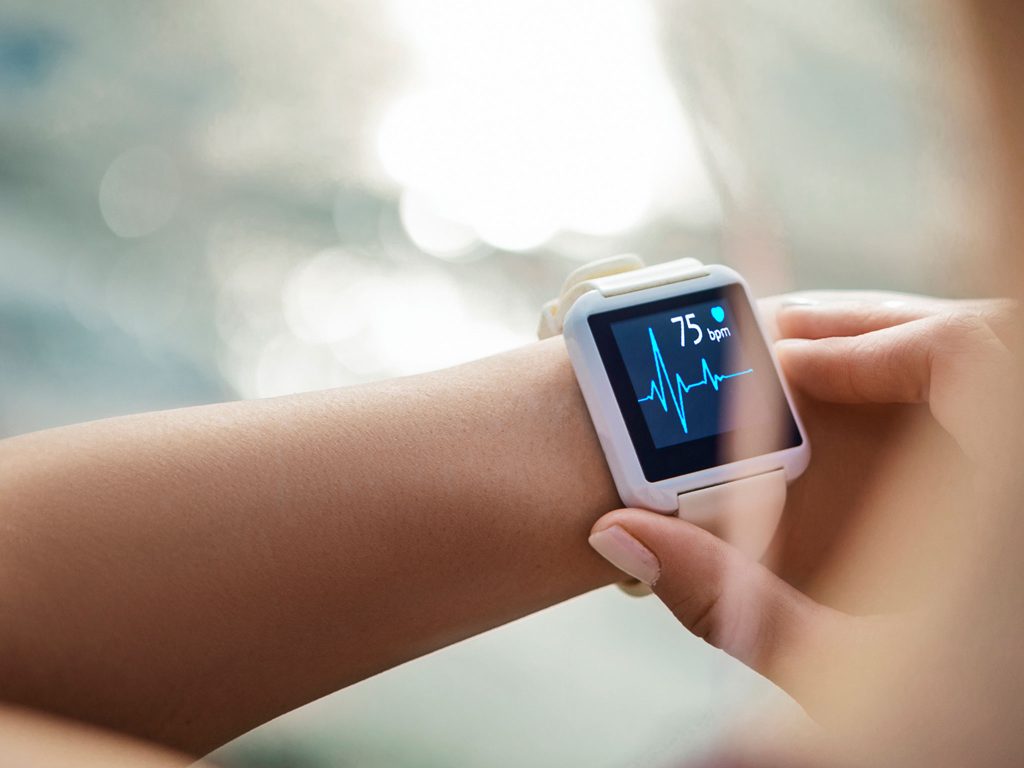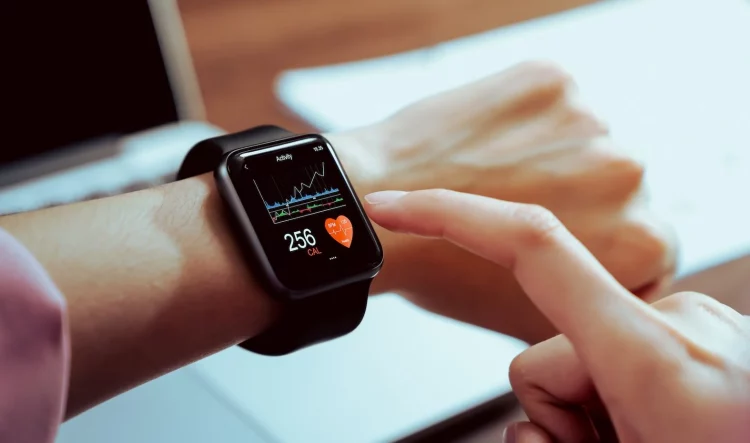Introduction:
The advent of wearable health technology has marked a significant milestone in healthcare, offering individuals the tools they need to monitor and improve their health in real-time. These devices, which range from fitness trackers and smartwatches to specialized health monitors, provide intuitive and actionable health data that can guide lifestyle choices, inform exercise habits, and help in the prevention of a range of diseases. With the integration of sensors, cloud computing, and sophisticated algorithms, wearables allow users to track vital signs such as heart rate, sleep patterns, physical activity levels, and even stress. As these devices become more advanced and ubiquitous, their potential to transform public health is immense.
In this article, we explore the role of wearable devices in health monitoring, their impact on preventive healthcare, and how they empower individuals to make informed decisions about their wellbeing.
1. The Rise of Wearable Health Devices
a. From Fitness Trackers to Health Monitors
Wearable health devices have evolved rapidly over the past decade. Initially, devices like Fitbit and Jawbone were primarily focused on tracking physical activity, such as steps taken, calories burned, and basic metrics like heart rate. However, with technological advancements, wearables have become much more sophisticated. Modern devices like the Apple Watch, Garmin wearables, and even specialized health gadgets like the Whoop Strap or Oura Ring now provide a comprehensive view of a user’s health. These devices can monitor everything from sleep quality and respiratory rate to ECG readings and blood oxygen levels.
b. Key Features of Wearables
Wearables today are equipped with advanced sensors that collect a wide variety of health data. Common features include:
- Heart Rate Monitoring: Continuous tracking of heart rate, providing insights into cardiovascular health.
- Sleep Monitoring: Measurement of sleep cycles, including deep, light, and REM sleep, which is crucial for understanding recovery and overall health.
- Step Counting and Activity Tracking: Real-time activity tracking, including steps, distance, and calories burned.
- Stress and Mood Monitoring: Many wearables now feature sensors that track stress levels through heart rate variability (HRV) and skin conductance, providing feedback on mental health.
- Blood Oxygen Monitoring (SpO2): Measurement of oxygen saturation in the blood, which can be a critical indicator of respiratory and cardiovascular health.
- ECG and EKG Monitoring: Some devices, such as the Apple Watch, now offer electrocardiogram (ECG) capabilities to detect heart irregularities, such as atrial fibrillation.
These sensors work together to provide users with a holistic view of their health, encouraging them to make adjustments in their daily routines and exercise habits.
2. Wearable Devices and Lifestyle Adjustments
a. Tracking Physical Activity and Exercise Habits
Physical activity is a cornerstone of good health, and wearable devices have made it easier than ever for individuals to monitor and track their exercise habits. Wearables offer real-time feedback, motivating users to remain active throughout the day. With step goals, calorie-burning targets, and activity reminders, these devices help users stay on track with their fitness goals.
- Personalized Fitness Goals: Many wearables create customized fitness goals based on a user’s fitness level, age, and health data. As users achieve these goals, wearables can adjust future targets to ensure continued improvement.
- Guided Workouts: Some wearables come with guided workouts and exercise tutorials, offering users the ability to follow specific fitness routines based on their personal health data.
This constant feedback loop helps individuals stay accountable to their health goals, increasing motivation and improving long-term health outcomes.
b. Sleep Quality and Lifestyle Adjustment
Wearables have also revolutionized the way we think about sleep. Quality sleep is essential for overall well-being, and wearables provide a detailed breakdown of sleep patterns, including how much time is spent in deep sleep, REM sleep, and light sleep. The ability to track sleep stages allows users to identify habits that may be negatively affecting their rest and make necessary adjustments.
- Sleep Hygiene: With insights into sleep patterns, wearables help users identify factors such as late-night screen time, irregular sleep schedules, or excessive caffeine consumption that could be hindering restful sleep.
- Improved Recovery: Understanding sleep data also helps athletes and active individuals optimize their recovery. Wearables can help users ensure they are getting adequate rest for muscle recovery, immune system function, and cognitive performance.
By understanding how lifestyle factors affect sleep, users can adjust their habits to improve their overall health and productivity.

3. Wearables and Preventive Healthcare
a. Early Detection of Health Issues
One of the most powerful applications of wearable health technology is in the realm of preventive healthcare. By constantly monitoring key metrics such as heart rate, blood oxygen levels, and sleep patterns, wearables provide early warning signs of potential health problems. This early detection can help individuals seek timely medical attention, preventing more serious complications down the line.
- Cardiovascular Health: Wearables that track heart rate and ECG readings can detect arrhythmias or irregular heartbeats, such as atrial fibrillation. Early identification of these conditions can prompt users to consult a doctor before they develop into more severe problems like stroke or heart failure.
- Respiratory Issues: Blood oxygen monitoring (SpO2) can identify early signs of respiratory issues like sleep apnea or pulmonary conditions. Wearables that monitor these metrics can alert users if their oxygen saturation falls below a safe level, prompting them to seek medical evaluation.
- Diabetes Management: Some advanced wearables are integrating continuous glucose monitoring (CGM) sensors to help individuals with diabetes track their blood sugar levels. This real-time data can help users avoid hyperglycemic or hypoglycemic episodes, ultimately preventing complications like nerve damage or heart disease.
Wearables are increasingly being integrated into personalized health programs, making it easier for individuals to take proactive steps toward preventing disease rather than reacting to illness.
b. Monitoring Chronic Conditions
For individuals with chronic conditions such as hypertension, diabetes, or asthma, wearables offer an invaluable tool for continuous monitoring. By providing real-time data on critical health indicators, wearables empower users to manage their conditions more effectively and take immediate action when needed.
- Hypertension Management: Wearables with heart rate and blood pressure monitoring capabilities allow individuals with hypertension to track their levels throughout the day. This continuous monitoring helps prevent sudden spikes and can provide valuable data for healthcare providers to adjust treatment plans.
- Diabetes Monitoring: Wearables that track glucose levels provide a constant source of information for individuals with diabetes. These devices make it easier for users to understand the impact of food, exercise, and medication on their blood sugar levels, offering them more control over their condition.
For people living with chronic conditions, wearables provide an easy, non-invasive way to stay on top of their health and prevent emergencies.
4. Data Security and Privacy Concerns
While wearable health devices offer numerous benefits, the collection and transmission of personal health data raise significant concerns about privacy and security. Since wearables gather sensitive health information, including heart rate, blood pressure, sleep data, and sometimes even GPS location, it is essential to ensure that this data is kept secure and used responsibly.
- Data Encryption: Leading wearable manufacturers implement encryption protocols to protect user data from unauthorized access. This helps secure data during transmission to cloud servers and ensures that it remains private.
- User Consent and Transparency: It is also crucial for users to have control over their data. Wearable manufacturers must provide clear guidelines on how data is collected, stored, and shared, ensuring transparency and consent from the user.
- Third-Party Integration: Many wearables allow third-party apps to access health data. Users must carefully consider which apps they connect to their devices, as these third parties may not have the same security standards as the primary manufacturer.
As wearables continue to play an increasingly central role in personal health, ensuring privacy and data security will remain a priority for both users and manufacturers.
5. The Future of Wearable Health Technology
As wearable devices continue to evolve, the future holds exciting possibilities for both individual users and the broader healthcare system. Some emerging trends in wearable health technology include:
a. Advanced Biosensors
In the future, wearables will incorporate even more advanced biosensors that can track a broader range of health metrics. For example, there is ongoing research into sweat biosensors that can detect biomarkers for stress, hydration levels, and metabolic health. These sensors will offer users an even deeper understanding of their health in real-time.
b. Integration with Healthcare Providers
As wearables become more sophisticated, there is potential for direct integration with healthcare providers. Real-time health data from wearables could be sent directly to a user’s healthcare team, allowing doctors to monitor their patients’ health remotely and intervene when necessary.
c. Personalized Health Recommendations
With the growing collection of health data, future wearables may offer increasingly personalized health advice. Machine learning algorithms could analyze a user’s data and provide tailored recommendations for diet, exercise, sleep, and stress management. These recommendations would be based on a combination of personal health metrics and broader population health data, offering a highly individualized approach to wellness.
Conclusion
Wearable devices have revolutionized how we approach personal health and wellness. By providing intuitive, real-time health data, wearables empower individuals to make informed decisions about their lifestyle and exercise habits. From preventing diseases to managing chronic conditions, the potential of wearable technology is vast, offering a more proactive approach to healthcare. However, as the technology continues to evolve, it is essential to prioritize data privacy and security, ensuring that users can reap the benefits of wearable devices without compromising their personal information.
As we move forward, wearables will continue to shape the future of health, enabling individuals to take control of their wellbeing and contributing to the broader goals of preventive healthcare and disease management.











































